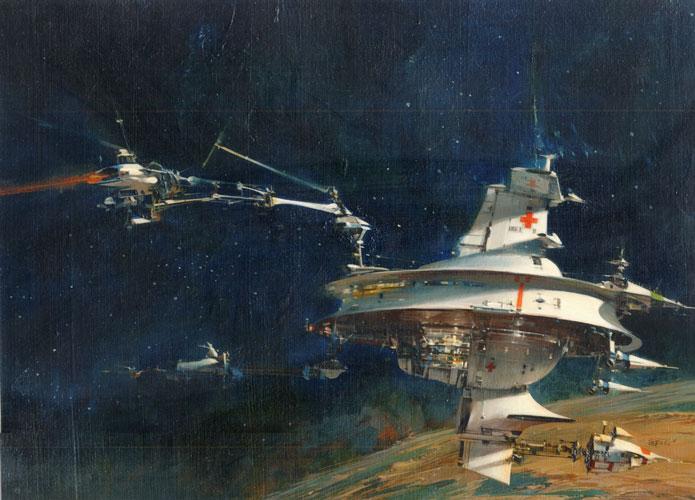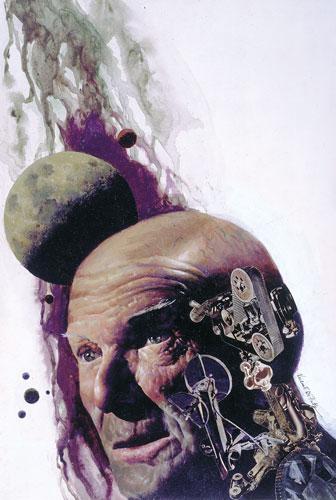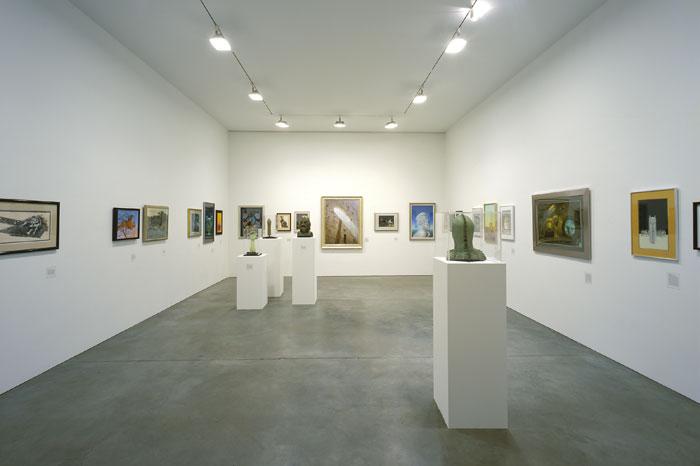This is a Science Fiction Show
curated by Vincent Di Fate
February 25 – March 26, 2005
Gallery 2
I attend a class once a week at the New York Academy of Science where in the Beaux Arts entryway they install thoughtfully curated exhibitions. This past November they opened an exhibition guest curated by Vincent Di Fate entitled: "From Imagination to Reality: The Art of Science Fiction" of painted illustrations and sculptural movie artifacts that I could not stop looking at. One imagines, as their press release reads, that the Academy of Science's interest in displaying this work was primarily to underscore how its fiction is "grounded in real science". For me I was overwhelmed with the work's pure innovation, their technical excellence and in most cases, how much better they were than the endless numbers of contemporary works that ironically or non ironically refer to these masterful illustrations. Week after week I became more engrossed with the works until I naively contacted Vincent De Fate only to find out that although very straight forward and modest, he is both one of the world's leading creators of science fiction imagery and the author of "Infinite Worlds: The Fantastic Visions of Science Fiction Art" considered to be the definitive volume on the subject.
I realized that the open ended agenda of our Gallery 2 program would be a perfect opportunity to contextualize this material within the framework of the contemporary art world that so often references it yet most likely has never seen it in the flesh. The over 30 included works span from the 1950 to the present representing pieces by Wayne Barlowe, John Berkey, Vincent Di Fate, Dean Ellis, Donato Giancola, Paul Lehr, Chris Mueller, Richard Powers, Murray Tinkleman, John Schoenherr, and Michael Whelan. Each work is accompanied by an illuminating wall text discussing its origins and how it contributes to the range of subjects that these artists have been instrumental in defining. Di Fate categorizes these subjects as: robots, travel, aliens and fantastic creatures, habitats, mind power and social relevance and dire predictions.
In many cases these works have been commissioned for the covers of science fiction writing including books by Isaac Asimov, Philip K. Dick and Jules Verne. Yet what becomes powerfully clear when you see these works in person is that they are not simply illustrating the stories, they are alluring experiential worlds of information and ideas in many ways equal to the expansiveness of the writing. These artists are often the source for and inspiration to how science fiction film looks. For instance, George Lucas hired John Berkey to work on the pre-production designs of Star Wars. It is these artists that have created the shared visual idea of how we see outer space, what we envision a robot and the archetypal alien to look like. Science fiction has the very powerful ability to pose both predictions and warnings for the future as well as create a veil in which to discuss present day ills. There is also an immense power to create for the viewer something they could have never imagined themselves.
Originally organized for the New York Academy of Science



